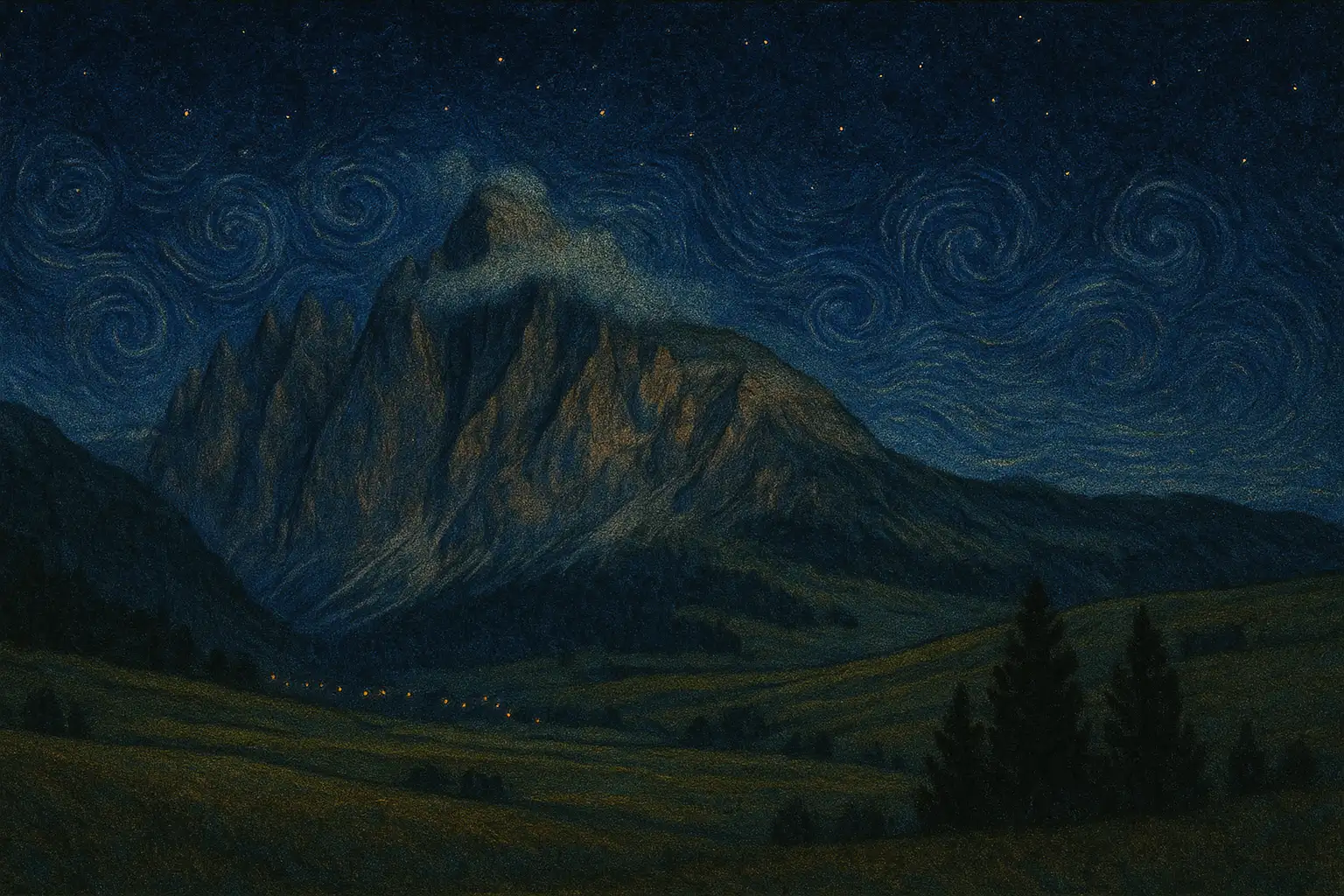On Digging Mountains — A Meditation on Abundance, Arrogance, and the Slow‑Building Rage of Giants
Published:
We move through the world like it's a giant store that never closes, taking resources for granted. This convenience can lead to arrogance, especially towards seemingly eternal features like mountains.

We move through the world like it’s a giant store that never closes. Flip a switch, light floods the room. Turn a tap, water rushes in. Swipe a card, bread appears, seemingly conjured from distant fields. It’s easy, almost too easy, for our minds—soothed by this constant convenience—to start humming a dangerous tune: there will always be more.
Mountains feed this illusion. They stand like symbols of endless supply, so immense we think we can carve tunnels through them, chip away their granite, riddle them with mines, and still count on them to be the perfect backdrop for our sunset photos. Whether it’s the Himalayas, the Andes, or the smaller Aravalis, they feel eternal simply because our short lives don’t register their slow, geological breaths.
The late poet‑essayist Nida Fazli once wrote of Mumbai’s coastline, where “बड़े‑बड़े बिल्डर समुद्र को पीछे धकेल रहे थे.” (“the great builders were pushing the sea backward”). He adds a line, that I remember very clearly:
जो जितना बड़ा होता है, उसे ग़ुस्सा उतना ही कम आता है; पर जब आता है, उसे शांत करना नामुमकिन है।
The larger a being is, the rarer its anger; but once provoked, no power can pacify it.
Fazli’s sea eventually rose, flung three cargo ships onto three different shores, and said nothing more. Its rebuttal was wordless, kinetic, elemental.
A mountain’s anger is quieter, but just as final. It might hold back centuries of snowmelt behind a natural dam of rock and debris, only to nudge loose a single boulder, no bigger than a postage stamp. Gravity does the rest. Suddenly, a tea shop, a stretch of forest, a well-trod pilgrimage route vanishes in the ensuing rumble. What we call a landslide is just geology clearing its throat.
Every time we swing a pickaxe into a hillside, we’re betting on the future stability of that slope. We dig tunnels assuming the peak above is solid and dependable. We count on the rain to drain away harmlessly. We trust that the road we blasted into the mountainside will always connect us to the valley town below.
But these assumptions carry a hidden cost, like debt silently gathering interest. The bill eventually comes due, often arriving as a 3 a.m. phone alert: Flash flood—evacuate now. The consequences of our actions don’t just return to us; they arc forward, hitting future generations with the accumulated force of our choices.
Why is it so hard for us to grasp consequences that play out over centuries? Our instincts are tuned to immediate dangers – the snake in the grass, the enemy’s approach. A glacier’s slow retreat, measured in millimeters per week, doesn’t trigger our internal alarms. So, we keep drilling, convinced the mountain is as unchanging as the wall behind a picture frame.
But a mountain is really a living record of geological tension. Tectonic plates strain against each other, water works its way into cracks, freezing and thawing, tree roots probe fault lines, and the constant tread of feet loosens the soil. Then, one ordinary afternoon, a shelf of rock gives way, and the landscape—and history—is violently rewritten.
So, what’s the answer? Should we abandon progress, give up copper wires and mountain tunnels? That’s not realistic. But maybe we can mix our ambition with a healthy dose of awe-filled caution:
- Look backward. Trace the conveniences we enjoy back to the natural places they impacted. The scarred mountain, the muddied river, the wind turbine slicing through a ridgeline.
- Think longer. Consider costs not just in quarterly reports, but across centuries.
- Expect limits. Understand that even colossal things—oceans, ice caps, mountains—have breaking points, even if we can’t see them.
- Build humbly. Approach construction as if you might one day have to personally apologize to the valley floor for the disruption.
Go stand near a cliff face at dawn. Feel the deep cold radiating from the rock; listen to the small sounds of pebbles skittering down – a kind of geological clock you can’t quite read. That’s the mountain, reminding you it’s alive, that it keeps its own accounts, and that our presence is noted, even if not yet permanent.
Dig if you must. Tunnel if you need to. But approach every step with the careful respect you’d show a sleeping giant. Because giants, once awakened, don’t discuss terms – they simply rearrange the world around them.
Latest articles
Read all my blog postsNovember 21, 2025
AI Psychosis
A dissociative state in which reality is experienced not directly, but as prompts to be engineered; life becomes a series of queries awaiting AI response.
Read moreApril 24, 2025
How to Ride the Wind, or Letting Go
Exploring the Tao Te Ching's concept of 'riding the wind' through the story of a man learning to let go of control and embrace effortless action (Wu Wei).
Read more